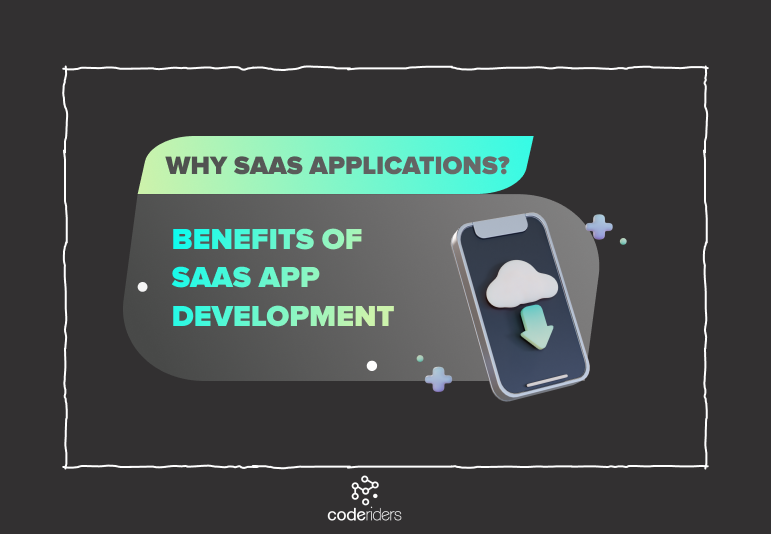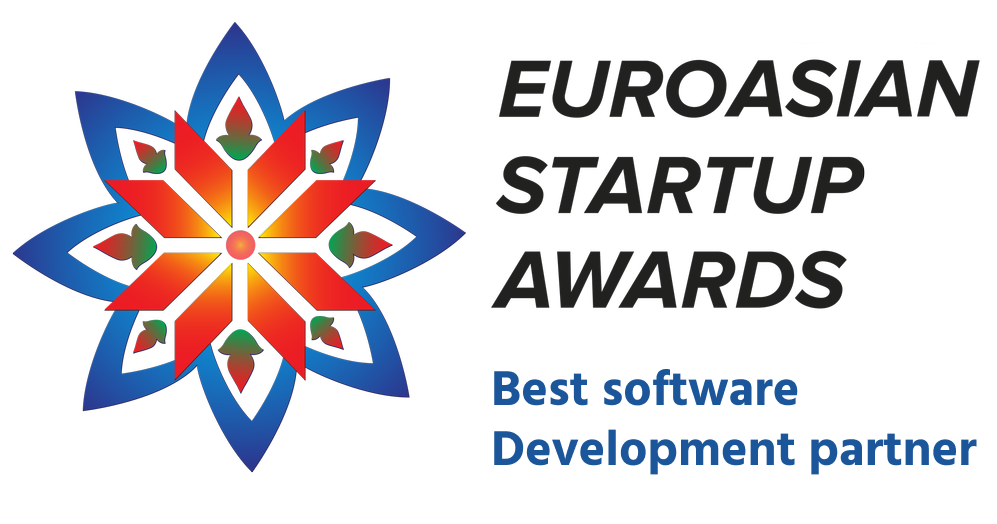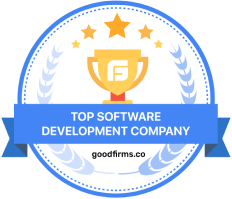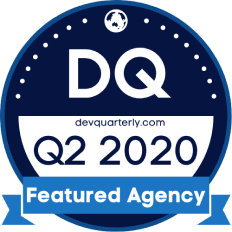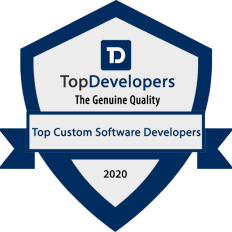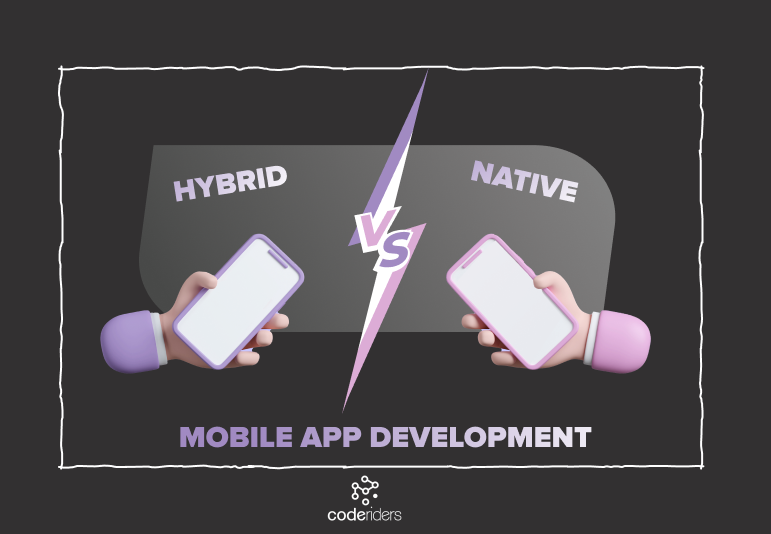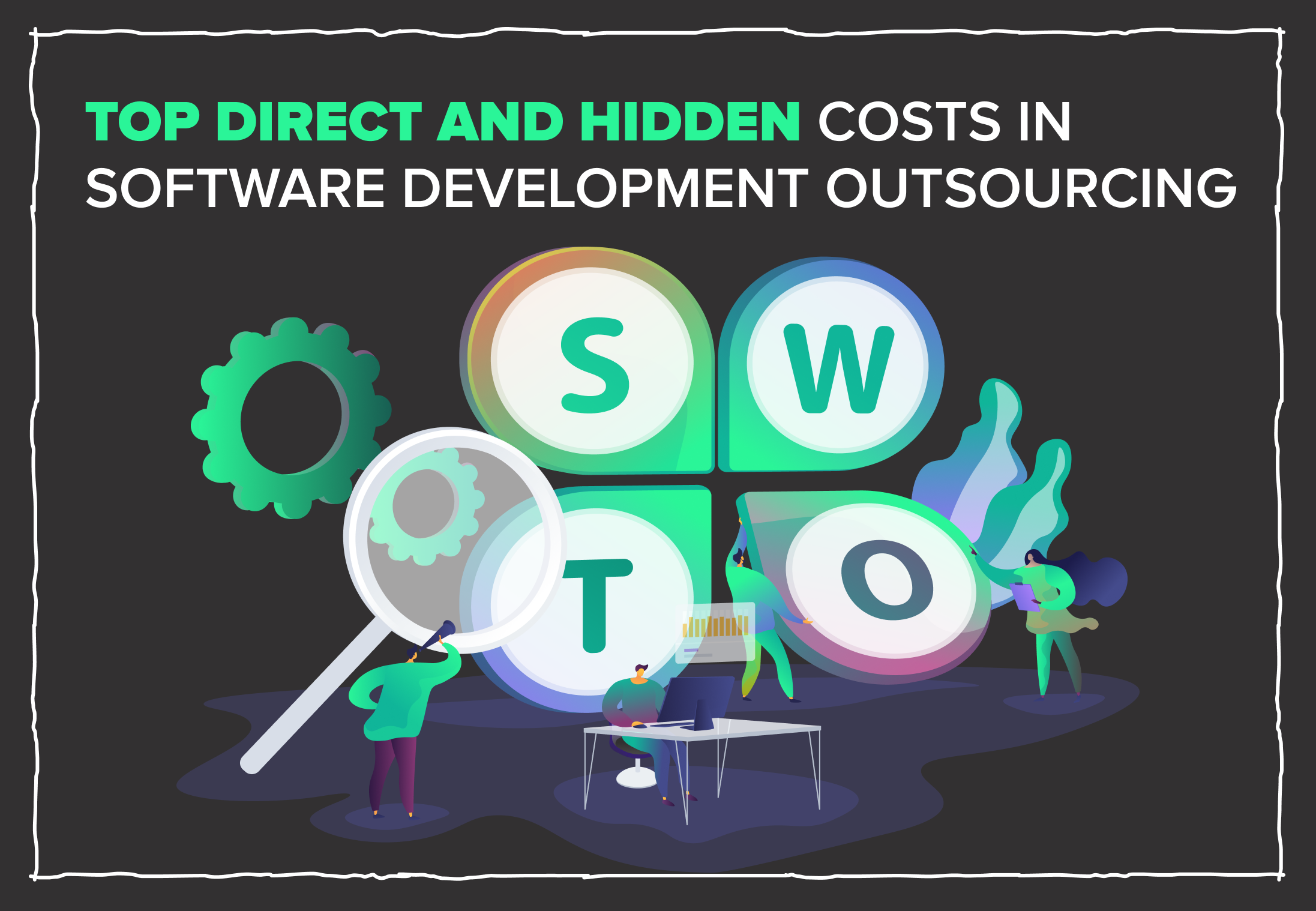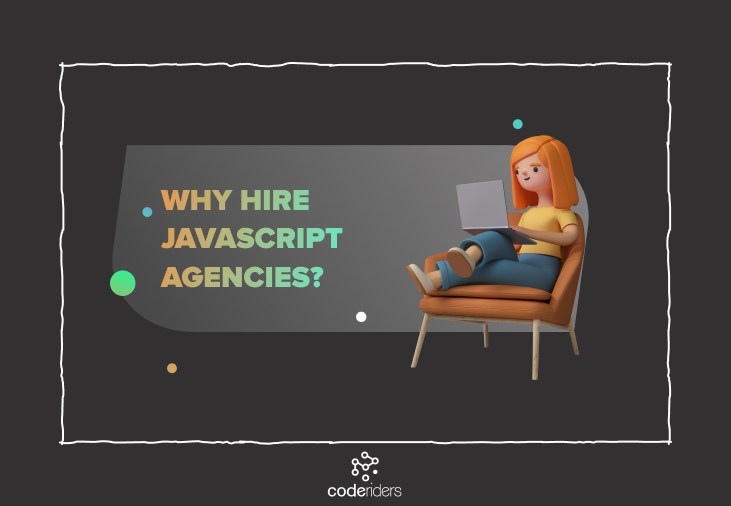According to Statista, one of the world’s most trustworthy statistics portals for market data, global interest in SaaS application development services is on the rise. SaaS platforms empower businesses worldwide because of their cost-effectiveness, user-friendliness, and scalability. Only by 2023, the SaaS market is estimated to reach 195 billion US dollars.
A software vendor, also known as a SaaS application development company, CodeRiders, could not surpass one of today’s most viral topics: SaaS application development. Let’s unwrap the most common questions about SaaS application development services.
What is a SaaS application?
Have you ever played games online on your phone or laptop without having to download anything? You just need the Internet and access to the website to play the game. This is a typical and practical example of a SaaS or software as a service application. SaaS is web-based, on-demand, or hosted software. The cloud-delivery model of SaaS applications allows users to access the application from any device with an internet connection and a web browser. SaaS application users do not install and maintain software on-premises; instead, they pay for the application on a subscription basis.
There are no additional fees for software maintenance and support, no operational management costs, no installation, updates, licenses, or upfront hardware costs; instead, easy accessibility via the internet browser, flexible payment methods (pay-as-you-go), and models. These benefits and user-friendliness make SaaS application development companies extremely attractive to businesses.
What Distinguishes a SaaS Platform from Regular Software Applications?
We are all familiar with regular applications. These applications require users to install software on their computers. The regular app installation process can sometimes become inconvenient. Common user concerns include:
- Unwillingness to overload their equipment with additional software,
- Unreadiness to pay additional fees,
- Lack of interest in software maintenance and support services.
Regular applications require server maintenance, a hardware operating system, and network bandwidth. The creation of regular applications sometimes turns into a complex software development process, especially if the app has multiple complicated functions. Regular application development is also expensive compared to SaaS applications. However, this does not mean all businesses should quit regular applications and start using SaaS applications instead. The choice between regular open-source applications, custom applications, and SaaS solutions depends on specific cases.
Here are the main distinctions between regular software solutions and SaaS applications.
Main Distinctive Features of Regular Software and SaaS Application
Customization
In SaaS, application customization is limited to the features provided by the SaaS application development company. The SaaS provider offers solutions based on their pre-analysis of their users’ needs. This makes SaaS applications less flexible.
Installation
SaaS applications do not require installation, which is an absolute favorite for businesses that do not require complex functions. On the other hand, regular applications need installation, maintenance, and support.
Finances
SaaS applications are more affordable compared to regular applications. SaaS applications are used on a subscription basis and offer various subscription models according to a company’s business needs.

Architecture
When delivering a SaaS application, the software vendor hosts the application on a remote server. This way, the SaaS application provider hands over the app’s functions to the end users over the Internet. SaaS application architecture falls into the multi-tenant type of architecture. This means multiple user groups of the application (tenants) have access to one system of the application. These user groups share the same database, but each user’s data is private and secured and can not be accessed by others. Regular software applications have a single-tenant architecture, which means each user has a different server, operational system, hardware, and database management system (DBMS). Now, which solution is better? It all depends on your company’s business needs.
Queries and reporting
Queries and reporting may last longer in SaaS applications, as multi-tenant applications should scan the whole database before showing the results. On the other hand, data access is much faster and easier in the case of regular applications, as the application itself owns the data, and there is no need for the service provider to check the quarry before showing the results. The data is also easily reformatted in regular applications, unlike SaaS applications.
Data ownership
In SaaS applications, the users have no ownership rights over the inserted data. The service provider (a SaaS application development company) is the one completely owning and controlling the database. This may sometimes be a result of controversies among the users. Therefore, SaaS application security is always an up-to-date topic. On the flip side, regular applications have complete ownership over the whole database, and users can access it without any problem.
Usability
SaaS applications are flexible and scalable when adding new users through simple upgrades and affordable licenses. On the other hand, regular applications have a user limit, and if the business wants to add new users, they may have to purchase more expensive licenses.
Security
When it comes to security, it is hard to choose which is more stable, as any product can be at risk of cyberattacks or hackers. For example, SaaS applications’ multi-tenant architecture may be risky in terms of security. On the other hand, regular applications have their own OS, DBMS, and server, which may also be easy for hackers to access.
Benefits of Using or Building SaaS Applications
Flexibility in your SaaS application development and implementation
Just like regular mobile and web applications, SaaS applications also require constant updates and upgrades. Your job does not end once you release your SaaS application. SaaS application development companies, just like other tech product providers, constantly explore their target audience. For SaaS applications, tracking end users’ performance and feedback is equally important.
Stable money income
As SaaS applications are subscription-based solutions, the software as a service provider or the owner of the SaaS application will always have regular revenue. The product owner’s income is collected from subscription fees from loyal customers and newcomers. If the SaaS application goes viral and reports good results, the software development company can go further by expanding its solutions and reinvesting.
Larger customer base
As we have spoken earlier, SaaS applications are much more affordable and available for various types of businesses and companies. Therefore, it is easier to collect a large customer base if the service provider conducts an iterative marketing and sales strategy.

SaaS Application Categories and Examples
SaaS applications are available in a variety of categories. The most in-demand and popular SaaS application categories include:
Marketing: SaaS applications for marketing help businesses plan, automate, track, and measure marketing campaigns, such as e-mail marketing, search engine optimization, social media marketing, content marketing, and lead generation. The most widely used examples are HubSpot, MailChimp, Google Analytics, and Google Search Console.
Communication and collaboration: SaaS applications accelerate and facilitate business communication between companies and their partners. Some of the most important SaaS communication applications include video conferencing, document sharing, and project management tools. Most common examples include Atlassian tools such as Jira (a project management tool mostly used for Agile software development), Trello, Confluence, Bamboo, and Crowd. Other popular communication and collaboration SaaS solutions include Slack, Microsoft Teams, Zoom, Google Meet, Discord, and Skype.
Customer relationship management (CRM): CRM SaaS systems are affordable tools for tracking customer satisfaction, managing customer relationships, and providing support services. Businesses often use Salesforce, HubSpot, Zoho CRM, and Insightly CRM SaaS tools.
Finance and accounting: SaaS finance and accounting applications help businesses manage their expenses, track and create invoices, organize tax payments, and do bookkeeping through the Internet on a subscription basis without installing finance applications and paying maintenance and server fees. Some examples of finance SaaS applications include QuickBooks, Xero, FreshBooks, and NetSuite.
Entertainment: The entertainment industry has also experienced a rise in SaaS applications and tools catering to various aspects of the industry. The most famous entertainment SaaS solutions include Netflix, Spotify, Twitch, StageIt, and more.
Business intelligence (BI): BI SaaS applications provide data analytics, graphics, and illustrations of business progress, return on investments, and KPI results to help make better business decisions. The following BI SaaS tools help businesses gather and analyze data: Tableau, Power BI, Domo, and Looker.

Human resources (HR): Recruitment processes may seem simple at first sight; however, that is not completely accurate. HR processes require a careful examination of a specific company’s values and visions before adding new team members. Hiring recruitment companies to find the perfect candidates for your business is expensive. Finding software outsourcing firms to build custom HR software for your business needs is a good practice but requires investments. SaaS HR solutions help automate HR processes and save time and money without major investments. SaaS HR tools cover recruitment, onboarding, employee performance analysis, and payroll processes. Bamboo, Zenefits, Paychex, Workday, and Gusto are some of the most-used HR SaaS tools.
Education and e-learning: SaaS e-learning tools facilitate and improve online learning processes. SaaS learning management systems (LMS), student information systems (SIS), and online learning platforms make education accessible to anyone interested. Blackboard, Moodle, Adobe Captivate, and Articulate 360 are among the most favorite e-learning SaaS tools worldwide.
Healthcare: Some of the most popular SaaS healthcare solutions include electronic health records (EHR) systems, practice management, and telemedicine platforms that help health-related institutions improve healthcare management. Practice Fusion, Salesforce Health Cloud, Kareo, and WebPT have widely used MedTech SaaS solutions among healthcare institutions.
Security: SaaS applications are also common among security solutions. Security SaaS applications help businesses secure their data and online systems. Some of the most common security SaaS solutions include antivirus software, firewalls, and threat intelligence platforms. Businesses often use Cisco Umbrella, Cloudflare, and Okta security SaaS solutions to protect data.
Design and collaboration tools: Cloud-based design and collaboration tools (in other words, design SaaS solutions) help designers, software developers, and teams to create, prototype, and collaborate on design files in real-time. Some of the most common design and collaboration SaaS tools include Figma, Adobe Creative Cloud, Sketch, and InVision. Adobe Creative Cloud is a SaaS alternative to classic software licensing, initially created as Adobe Photoshop.
Adding new plugins to these already-existing SaaS applications is also common practice among companies. For example, lately, CodeRiders worked with an Italian company and helped them build a Figma plugin that significantly eases the work of UI/UX designers or anyone who uses Figma.
A Typical SaaS Application Development Team
A classic team of SaaS application development companies usually includes the following professionals:
Business analyst
A person who supports continuous improvement in the product’s technology and processes identifies the project’s stakeholders and builds the best possible communication plan for each. The BA defines the goals and requirements of the project, acts as a bridge between the client and the software development team, and creates and prepares use cases and functional specs. He/she also structures business processes, works on the business rule documentation, inspects the market, and ensures the team has a successful business model.

Project manager
The PM is responsible for the product’s smooth, on-time delivery and progress. The PM plans the development process, assigns tasks, keeps track of the work of the tech team, and ensures the product requirements align with the actual software development and implementation results.
The software development team (back-end developers, front-end developers, full-stack developers, and mobile app developers): Back-end developers work on the server side of the product. They ensure all the features and functions of the product are implemented correctly and are aligned with the database. Front-end developers work on the client side of the product. They ensure successful interaction between the users and the product. Full-stack developers are responsible for both, while mobile app developers build the mobile version of the product or application.
Related: Hybrid mobile app development article
UI/UX designers
UI/UX designers design and implement the user interface and ensure a positive user experience. UI/UX designers are responsible for convenient, user-friendly, and eye-friendly applications.
QA engineer or tester
QA specialists or testers check the product and make sure it is bug-free and has no defects.

CodeRiders has been providing SaaS application development services ever since its establishment. Along with other services such as web development and design, custom software development, software outsourcing, outstaffing, and mobile app development, CodeRiders is also a well-recognized SaaS application development company. We have satisfied clients from every continent and multiple industries. Our experienced software developers are flexible enough to switch to various software outsourcing engagement models, from Agile software development to Waterfall. They are also well prepared to work as individual, dedicated software developers and within teams.
Click here to book a free consultation with our business development team.
Having
development
needs?
CodeRiders will address your web and mobile development challenges by creating custom software, helping with outsourcing services, or just consulting on your software development requirements.



